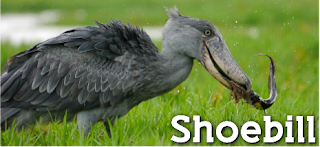If there is one word that can be associated with Volcanoes National Park, it's "Resplendent."
Located in the Virunga volcanic region, which extends into Democratic republic of Congo and Uganda, Volcanoes national park is a mountainous region adorned with rainforests brimful of vivacious and unequalled wildlife and one of the 3 only habitats for mountain gorillas on the planet.
The evergreen forests, sections of bamboo trees, small patches of shrubs and grassland areas; the wetland vegetation in the valley, heath on the tips of the Volcanoes, these offer ideal conditions for the survival of these magnificent mountain gorillas and other unique wildlife species.
In September 1967, an American primatologist and conservationist, Dian Fossey, founded the Karisoke Research Center, a remote rainforest camp nestled in Ruhengeri province in the saddle of two Volcanoes.
She carried out 20 years of research in Rwanda where she actively supported conservation efforts, strongly opposed poaching and made more people acknowledge the sapient gorillas.
Inspired by the movie "Gorillas in the Mist" which was based on her documented work, the Dian Fossey trail was my first choice of adventure spots in Rwanda.
I found a cheap, dorm room walk up in Kinigi town, at the serene Kinigi Guest House, not far from Volcanoes national park; for before the trip, I crossed paths with an experienced Rwandan traveler who recommended that the spectacular views and sunset at Kinigi are the go-to for any nemophilist.
I calculated that with the Dian Fossey trail permit at only $75 obtainable at Volcanoes headquarters, if I ate frugally at the Kinigi guest house restaurant, walked or used public transport, this would be one of the cheapest hike for vacation in Rwanda.
Inclusive of the Dian Fossey trail permit fee was a professional guide. Being that few people took up the hike in this new wonder of the world, this made it feel peculiar and uncrowded; a feel of having the forest to yourself!
The hike was estimated to take 3 - 4 hours with regular water breaks. And for the terrain, unsurprisingly muddy; though the walking sticks provided help with the avoidance of falls and loss of shoes.
Registration and debriefing commenced at 7:00 am at the headquarters and came with a complimentary free cup of coffee. Much needed!
I had my passport, permit, some light snacks and water in my travel backpack, had a pair of army green gaiters on in case I came into a line of red ants; and perfectly covered up in long, black pants and green shirt because I was advised that the park is full of stinging nettles.
During the hike, a small group of 3 and I were escorted through the thick rainforest by 2 armed Rwandan Defense Force soldiers, for our protection against whatever could bring us harm.
Visited the gorilla graveyard where Dian Fossey was buried; her tomb adjacent to her fave gorilla didget and 25 others.
The trail led on to the ruins of Dian's house where her unsolved murder occurred.
There was lots of emotion packed impartation involved. This included Dian Fossey's biography, her research center history, and lessons on the surrounding vegetation from the tour guide.
Luck was on our side though, because the tour group and I came into part of a troop consisting 3 majestic gorillas; 2 females and a cute infant held by one of them.
Having visited the different ruinations of the research center, my comrades and I stopped for lunch and later headed back, descending the mountain.
This meant 1 and half hours more through the thick rainforest, with shape eyes on the lookout for more of the amazing wildlife and finally back to Kinigi guest house for a full body cleansing.
The mountainous hike was worthy it and with a budget of R2,454, the adventure safari was one for the books.
Image source: Instagram























